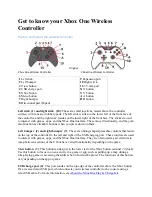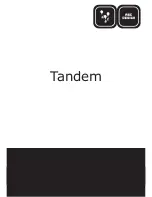User Manual For - CONTROLLER/DATA RECORDER MultiCon CMC-99/141
–
Max. value source
– available for certain math functions, selects a logical channel
from the list which will be the maximal value source for the function,
–
Maximal value
– available for certain math functions, a constant value which will be
the maximal value for the function,
–
Averaging time
– available for
Function=avarege of X
, determines the logical
channel amount of samples which fits in this time and will be averaged; after this
time the function enters a saturated state,
–
Reset now
– the button available for certain math functions, asynchronously resets
the function value,
–
Reset mode
– available for some math functions, depending on this parameter the
user can set the following options:
•
disabled
– means that the function will stop at this value after reaching the
maximal value,
•
automatic
– means that the function will automatically reset itself and return to
the initial value after reaching the maximal value,
•
from log. channel
– means that the function reset is triggered from the selected
logical channel,
–
Reset source
– available for some math functions, selects a logical channel which
will be a reset source for the function,
–
Reset triggering
– available for some math functions, allows to select a triggering
method from the logical channel, the user can set the following options:
•
high level
– function resets when resetting channel is in high state,
•
low level
– function resets when resetting channel is in low state,
•
rising edge
– function resets when rising edge occurs in resetting channel,
•
falling edge
– function resets when falling edge occurs in resetting channel,
–
J input mode
– available for
Function=flip flop
, the user can set the following
options:
•
always 0
– flip flop J input is always in logical state '0',
•
always 1
– flip flop J input is always in logical state '1',
•
from log. channel
– means that flip-flop J input source will be the logical state
value of the selected logical channel,
•
from channel (negation)
– means that flip-flop J input source will be
the negated logical state value of the selected logical channel,
–
J input source
– available for
Function=flip flop
, selects a logical channel which
will be the source for the flip-flop J input,
–
K input mode
– available for
Function=flip flop
, the user can set the following
options:
•
always 0
– flip flop K input is always in logical state '0',
•
always 1
– flip flop K input is always in logical state '1',
•
from log. channel
– means that the flip-flop K input source will be the
the logical state value of the selected logical channel,
•
from channel (negation)
– means that the flip-flop K input source will be
negated logical state value of the selected logical channel,
–
K input source
– available for
Function=flip flop
, selects a logical channel which
will be the source for the flip-flop K input,
–
Clock source
– available for
Function=flip flop
but unavailable if the parameters
J input mode
and
K input mode
are both set as always 0, allows to select a logical
channel which will be the flip-flop clock input source,
–
Clock triggering
– available for
Function=flip flop
, the user can set the following
options:
107


















